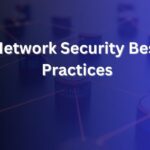Your network connects everything from email and IoT devices to cloud services and remote users. If it lacks strong security, you leave your business exposed. You must act now to secure it.
In this article you will learn how to audit your infrastructure, control access, monitor activity, respond to incidents and adopt policies that protect your organization from evolving threats — in this article.
Why Network Security Matters
Bad actors aim at networks because that is where data flows, risks multiply and impact scales fast. The average cost of a data breach hit $4.35 million in 2022 for U.S. companies. You cannot ignore this risk.
Network security protects your data, devices and users. It safeguards your business continuity. It reduces downtime and supports regulatory compliance. If you implement proven practices you gain resilience and trust.
Start with a Network Audit
Begin by fully mapping your network. List all endpoints, including workstations, mobile devices, servers, printers and IoT gear. Identify applications and services. Catalog cloud-based and on-premises assets.
Next check device configurations. Examine unused ports, open services, default credentials and outdated firmware. You cannot fix what you do not know.
Create baseline metrics for traffic volume, protocols used and typical user behaviour. You will use this later to spot anomalies.
Apply Segmentation and Least Privilege
Divide your network into zones. Create separate network segments for guest Wi-Fi, production systems and management functions. Use VLANs or micro-segmentation to limit lateral movement.
Restrict user access by role. Users should only reach what they need. This principle of least privilege reduces exposure.
Place your most critical assets in isolated subnets behind strong controls. That way if one part is breached the rest stays safe.
Use Strong Access Controls
Require multi-factor authentication (MFA) for all sensitive access. Do not rely on passwords alone. Enforce password complexity, rotation and unique accounts.
Implement network access control (NAC) solutions. Ensure devices meet health requirements like antivirus status or patch level before joining your network. Deny or quarantine non-compliant devices.
Control external access via virtual private networks (VPNs) or secure tunnels. Encrypt all data in motion. Keep remote access tightly monitored and time-limited.
Keep Devices and Systems Updated
Patch management is non-negotiable. Cyber criminals exploit known vulnerabilities within days. Make sure routers, switches, firewalls and servers receive firmware updates promptly.
Disable unused services and default accounts. Remove or replace unsupported hardware and software. Automation helps you scale this work and avoid human error.
Use Firewalls, IDS and IPS
Deploy a perimeter firewall between your network and the internet. Use internal firewalls separating trust zones. Configure rules that deny all unnecessary traffic by default.
Install intrusion detection systems (IDS) and intrusion prevention systems (IPS) to monitor suspicious behaviour. Log traffic, alert on anomalies and block real-time threats.
Ensure your tools cover north-south and east-west traffic. Attackers often move laterally inside your network once access is gained.
Encrypt Data and Communications
Encryption protects your data from prying eyes. Use TLS or IPsec for communications. Encrypt sensitive information at rest and in backups.
Implement secure email gateways to block malicious attachments and links. Use web filtering and DNS control to prevent users from accessing dangerous sites.
Monitor, Detect and Respond
Visibility is key. Use a security information and event management (SIEM) system to collect logs, correlate events and detect patterns.
Perform regular vulnerability scans and penetration tests. These proactively uncover weaknesses before attackers exploit them.
Define incident response plans. When a breach happens, your team must act quickly. Roles, procedures and communication channels should be clearly defined and tested.
Train Your Team and Foster a Security Culture
People remain your weakest link. Phishing, social engineering and credential reuse are still highly effective for attackers.
Organize security awareness training for all employees. Teach them to spot phishing emails, avoid suspicious links and use strong passwords. Encourage reporting of odd behaviour.
Create a culture of ownership where everyone plays a part in protecting the network. Reward compliance and good security hygiene.
Enable Zero-Trust and Continuous Improvement
Zero-trust means you trust nothing and verify everything. Treat internal and external users the same. Assume breach, segment, verify and restrict.
Use real-time analytics and behavioural monitoring. Adapt rules and controls as threats evolve. Review your security posture regularly.
Set measurable objectives for improvement, and audit against them. Use maturity models or frameworks tailored for your business size and risk profile.
Secure Remote and Mobile Access
Remote work and mobile devices changed the network perimeter. Users connect from anywhere. Your control must be everywhere.
Use secure access gateways and enforce device posture checks. Configure mobile device management (MDM) policies. Encrypt tablets and phones. Keep remote sessions time-limited and monitored.
Public Wi-Fi is a risk. Instruct users to connect only through company VPNs and verify certificate authenticity.
Backup, Recovery and Business Continuity
Even with best-in-class prevention you must assume a breach will happen. Maintain regular backups stored offline or off-site.
Test your recovery process regularly. Can you restore critical systems within your business’s acceptable downtime and data-loss thresholds?
Ensure you have continuity plans for major incidents — ransomware, data breach or physical damage. A manual fallback plan may save you.
Measure and Report on Security Metrics
Choose meaningful metrics to track your network security health. These might include time-to-patch, number of unapproved devices, incidents per month or mean time to detect (MTTD).
Report to senior leadership. Make security visible to the business, not just IT. Use clear dashboards and executive summaries.
Plan for Emerging Threats and Trends
Cyber threats evolve. Stay ahead by planning for cloud migration, IoT expansion and supply-chain risk.
Leverage artificial intelligence (AI) and machine learning (ML) for threat hunting and anomaly detection. Consider network-as-a-service and managed security service providers (MSSPs) for extra firepower.
Adopt “security-by-design” for new projects rather than bolt-on later.
Conclusion
By following these network security best practices you build a strong, resilient foundation for your business. You reduce risk, limit damage and keep your data safe.
Review your network audit, enforce segmentation, control access, monitor systems and train your team. Adopt zero-trust, plan for incidents and measure your progress. Security is a continuous journey. Stay vigilant, stay prepared and protect your network.







